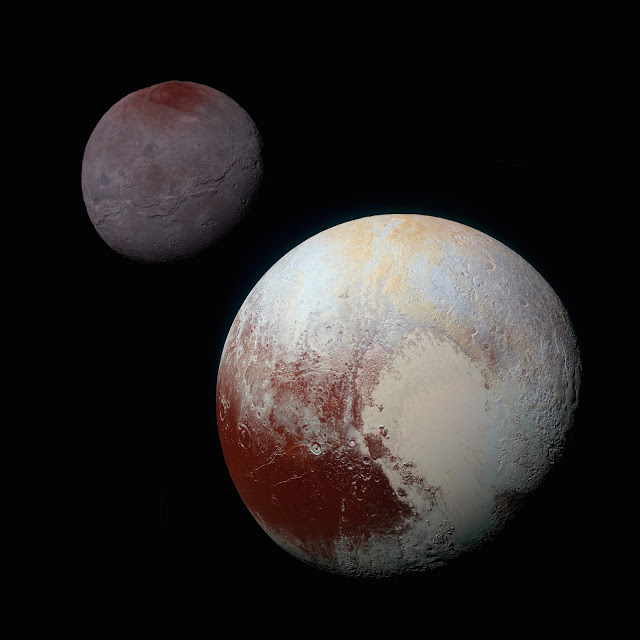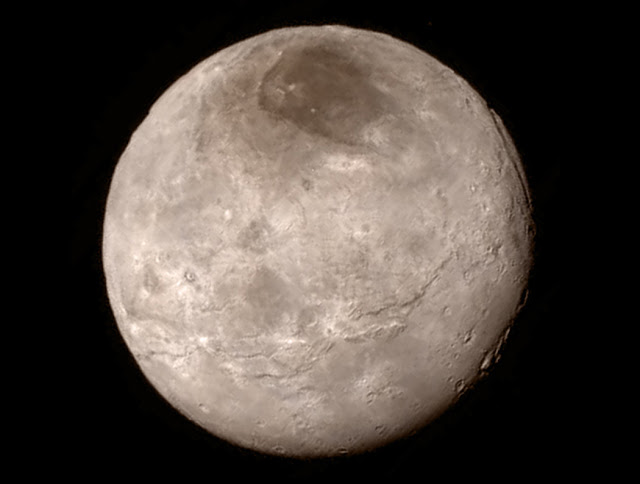

| Online: | |
| Visits: | |
| Stories: |

| Story Views | |
| Now: | |
| Last Hour: | |
| Last 24 Hours: | |
| Total: | |
How a Moon Slows the Decay of Pluto’s Atmosphere
A new study from the Georgia Institute of Technology provides additional insight into this relationship and how it affects the continuous stripping of Pluto’s atmosphere by solar wind. When Charon is positioned between the sun and Pluto, the research indicates that the moon can significantly reduce atmospheric loss.
“Charon doesn’t always have its own atmosphere,” said Carol Paty, a Georgia Tech associate professor in the School of Earth and Atmospheric Sciences. “But when it does, it creates a shield for Pluto and redirects much of the solar wind around and away.”
This barrier creates a more acute angle of Pluto’s bow shock, slowing down the deterioration of the atmosphere. When Charon doesn’t have an atmosphere, or when it’s behind or next to Pluto (a term scientists call “downstream”), then Charon has only a minor effect on the interaction of the solar wind with Pluto.
The research is currently published in a special Pluto issue of the journal Icarus.
John Hale is the Georgia Tech student who co-led the study with Paty. He says the Pluto system is a window into our origins because Pluto hasn’t been subjected to the same extreme temperatures as objects in closer orbits to the sun.
“As a result, Pluto still has more of its volatile elements, which have long since been blown off the inner planets by solar wind,” Hale said. “Even at its great distance from the sun, Pluto is slowly losing its atmosphere. Knowing the rate at which Pluto’s atmosphere is being lost can tell us how much atmosphere it had to begin with, and therefore what it looked like originally. From there, we can get an idea of what the solar system was made of during its formation.”
Charon, a moon of Pluto. When Charon is positioned between the sun and Pluto, Georgia Tech research indicates that the moon can significantly reduce atmospheric loss
Hale and Paty also say their study affirms a popular hypothesis of Charon. The areas of discoloration near its lunar poles are likely caused by magnetized particles that have been shorn from Pluto’s atmosphere. These particles have accumulated and settled on Charon over billions of years, particularly when it is downstream of Pluto.
Jason Maderer
Source:




